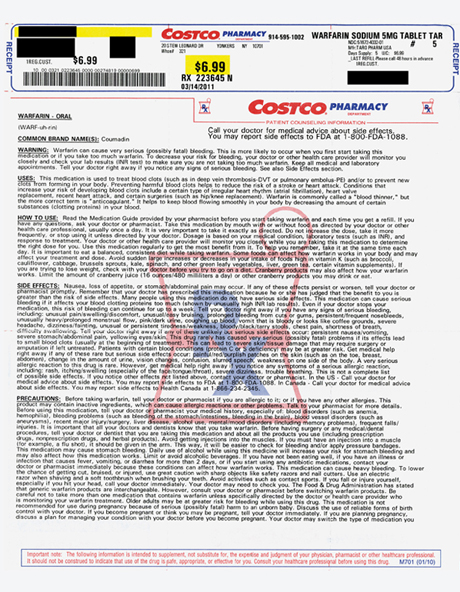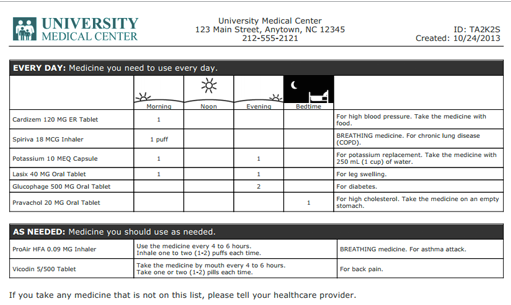 By Joy Rios, Health IT Consultant at Ask Joy Health IT Consulting
By Joy Rios, Health IT Consultant at Ask Joy Health IT Consulting
Twitter: @askjoyrios
Patient engagement was one of the main buzzwords at HIMSS this year. It’s the kind of topic that can ignite a passionate game of tug-of-war. Some folks define patient engagement to patients accessing their health records or securely messaging their doctors. Others consider patient engagement as medication adherence, a reduction in readmissions, or even the use of mobile health apps.
From a patient’s perspective, a common place to “engage” is at the pharmacy, when they receive drug directions that are more than an arm’s length and include pages of side effects and warnings. Like many notoriously long Terms and Conditions agreements, a common response to these details is to just tune them out.
It’s a tough pill to swallow, but one in three Americans are considered low health literate and struggle to understand their often complex medication instructions. Medication mistakes are the most common form of medical errors in the U.S., resulting in 3.6 million office visits, 700,000 emergency room visits, and 117,000 hospitalizations each year, according to an Institute of Medicine report.
It should come as no surprise then that health literacy is strongly tied to patient engagement. When patients understands their condition as well as how to manage it, they are more empowered to make better health decisions.
One company is not satisfied with the status quo and is flipping the traditional model of disseminating drug directions on its head.
They’re turning this:

into this:

Meducation instructions are written at a 5-8th grade reading level, clearly identify drug, dose, time of day, explain what each drug is for, and even link to video tutorials for the more complicated directives, such as how to use an inhaler or give an insulin shot. Meducation is available in 22 languages and in larger fonts. It can be printed onto a single sheet and posted on the fridge or patients can enter the barcode number assigned to them on the website to access supplemental education materials.
Turns out that when patients have a better experience with their directives, they are safer, they have better outcomes, and their provider’s satisfaction scores go up. It’s a win-win.
Lori Mclean, COO of Polyglot Systems, makers of Meducation, gave me a demonstration of system at HIMSS, showing just how easy med-speak can be translated to plain English for the average consumer. This video does a great job too.
https://www.youtube.com/watch?v=a0bNG7TNZnE
This post has been syndicated from 4Medapproved blog.
